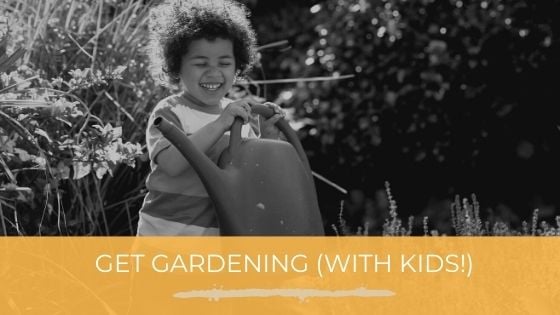Moss-covered rocks. Dusty LEGO sets. Countless sticks, crammed into a corner. These are the “treasures” of my 11-year-old’s room.
I’m well aware of his love for stuff. It’s a fun ritual when he’ll show me his collection of rocks, cards or erasers. But I’m starting to wonder if his little collections are getting out of control. Desk drawers are chock full of pencils, gum wrappers and toys. Boxes and containers are filled with knickknacks of every kind, including old Christmas decorations he didn’t want to put away.
When I try to get rid of something, he’ll try to grab it out of the garbage, insisting that he still needs it. It got me thinking: Kids don’t hoard like those folks on hoarding TV shows, do they? As I stand in the middle of his room, wondering where to start, I think: Maybe those adults on the TV started out just like this.
When collecting isn’t really collecting
Kids like collecting. In fact, it’s a classic rite of passage for kids and a normal part of child development.
In his book, Stuff: Compulsive Hoarding and the Meaning of Things, Randy Frost explains: “Collecting is very important to kids, starting at about age 2, when they learn the meaning of the word ‘mine,’ up until early teenage years.”
But there’s a fine line between creating collections and hoarding, according to the Bio Behavioral Institute. If your child collects and displays treasures — and is proud of his or her collections — that’s a good sign. And the same goes for kids who are happy to talk about their stuff and want others to be interested in it, too. Healthy collections will be organized (most of the time) and ready for display. Some kids even enjoy budgeting their allowance so they can add to their collections.
Hoarders are different, according to the institute, a private mental health practice in New York. Hoarders associate their collections with embarrassment, and they tend to feel uncomfortable when others see or touch their things. Collecting is something the child wants to do. Hoarding is something children feel they need to do.
Hoarding, according to the American Psychiatric Association, is a complex disorder and is characterized by persistent difficulty discarding or parting with possessions, regardless of the value others may attribute to these possessions.
Different than adult hoarding
Hoarding among kids tends to be more contained than adult hoarding, which can spread across an entire home, according to the New York-based Child Mind Institute.
Children, for example, might hoard under their bed or in areas of their bedroom. And it might not be immediately obvious to an observer because disorganization is so common among children.
Hoarding in kids is more about difficulty letting go, rather than acquisition, according to the Boston-based International Obsessive Compulsive Disorder Foundation. Young kids don’t usually have access to money and transportation that would let them shop all the time. For young children, hoarding may look different, because parents control what kids can buy, and the level of clutter in their rooms.
Parents should watch for intense attachments to objects and the tendency to stockpile items. Stockpiling can include clothing, food, toys, trash (such as gum and candy wrappers), rocks and even cups of sand.
Hoarding can start young
Hoarding affects an estimated 2 percent to 5 percent of the adult population, according to the International OCD Foundation. And the disorder can begin early in life. More than 40 percent of adult hoarders first start showing hoarding behavior by the time they’re 15 years old. Though hoarding behaviors typically start around age 13, children as young as 3 can suffer from the disorder.
Codi Williamson, a third-grade teacher and mother of two in Pataskala, Ohio, said she and her husband constantly struggle with their 4-year-old son’s stockpiles of stuff.
“As long as I can remember, anything that he could fit into a container and carry around, was always with him. He would be obsessed with it,” Williamson said. “He loves grocery bags with handles.” Williamson said her son carries around normal items such as toys and cards, but also keeps used flossers and anything else he can find to jam into a box or bag.
“He doesn’t like to get rid of it,” she said. “About once a month, we go through it, sometimes when he’s not looking.” Williamson and her husband also try to reason with their son to explain why it’s important to let things go.
Panic is a warning sign
If a child doesn’t just protest, but panics when asked to get rid of old, unnecessary possessions or clutter, it can be a warning sign, said Katherine Quie, a child psychologist at Psych Recovery in St. Paul.
“A dead give away is when the child can’t tolerate others touching it or cleaning it up. They feel really panicky at the idea of anything happening to it,” Quie said. “The child is putting too much meaning on belongings. It’s so meaningful, that they literally panic if they get rid of it. They might not want to leave their stuff, so they carry it with them.”
Quie stresses that it’s normal for kids to be upset when they have to say goodbye to some toys, like at a garage sale, or donating an old, favorite stuffed animal. But, she said, parents can usually talk a child through it. “With a child [with hoarding tendencies], all the normal talking through does not work.”
Quie explains that kids will hoard for different reasons. On several occasions, she has worked with young children who hoarded food in large quantities due to food scarcity experiences in their pasts.
“A lot of times,” she said, “the kids don’t understand why they’re doing it.”
Symptoms
According to the New York-based Child Mind Institute, mental health providers check for three principal characteristics when diagnosing hoarding — persistent difficulty discarding or parting with possessions, regardless of their actual value; cluttered living spaces from having so many possessions; and significant distress or functional impairment.
While a rock or stamp collector might search out specific items for his collection, a hoarder will acquire items seemingly at random and then struggle when asked to part with them. The most notable sign of hoarding among children, according to the institute, is the emotional reaction to their possessions, according to the institute. Children with a hoarding disorder are constantly worried about their possessions — so much that it interferes with their functioning and becomes a major source of tension between them and their parents.
Treatment
For children age 8 and younger, psychologists often work with parents to set up a behavioral plan, to first stop a child from acquiring new things and then use incentives to work on gradually getting rid of some of the hoarded objects. For older children, cognitive behavioral therapy can be helpful. Children can learn to understand why they feel compelled to hoard and how to decide which possessions are worth keeping and which should be discarded. Medications can also be incorporated into treatment, according to the institute, which offers a mental health symptom checker at childmind.org.
Prevention
If your child isn’t showing signs of obsessive-compulsive hoarding, but you feel overwhelmed by the amount kid collections in your home (and want to discourage any tendencies toward hoarding), try these tips from Jan Lehman, a professional organizer with Can the Clutter (cantheclutter.com), which serves clients in Minnesota and Oregon.
- Create a permanent “donate” bin or space in your home to collect old toys and other unneeded items. Teach kids to put toys and clothes in the bin regularly.
- Be sure all storage containers are easy to use, including open bins versus bins with tight-fitting lids.
- Organize various spaces with your child. Use timers and make it game: “Let’s see how much we can organize in 10 minutes!”
- Let your child create a memorabilia box for some of their precious items. Store it somewhere outside of your child’s room.
- Ask for gifts that provide experiences, rather than toys, such as tickets to a movie or memberships to a museum.
- Give detailed instructions: “Pick up your clothes and put them away,” instead of general commands: “Clean your room.”
Kelly Jo McDonnell lives in Lino Lakes with her son, 11. She is a freelance writer and a producer/writer with Minnesota Bound on KARE 11 TV.

















